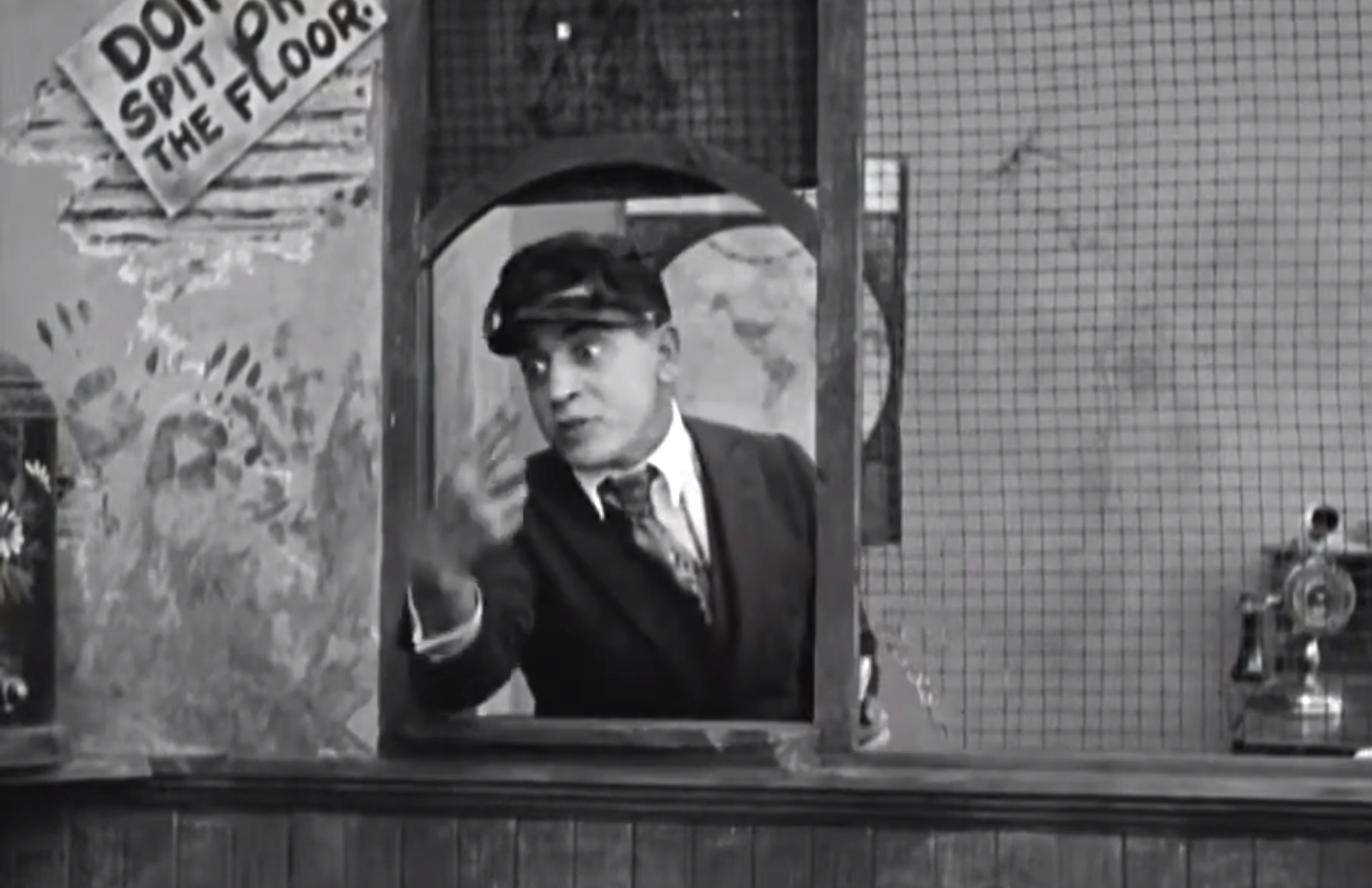What struck me and stayed with me for years was the scene in A Dog’s Life (1918) where Charlie is in an employment office. As presented in The Chaplin Revue (1959), the film was step-printed so that it would be appear to be running at 16 frames per second even though the film was being projected at 24 fps, standard “sound speed”. The step-printed film has a very slight jitter – which you get used to – and the physical movements are a lot closer to real-time speed.
Charlie has been sitting on a bench with several other men, waiting to be called up to the window to be given a work assignment. Charlie is closest to the teller-like window at the front of the office. Cut to a close-up of the window, and a man (played by Charles Reisner) steps into view and gestures for the applicants to approach the window. Charlie hops up from the bench.

As Charlie walks toward the window, one of the other men, from the other end of the bench, gets up and briskly walks past Charlie and arrives at the window before Charlie can. This happens again, and again and again.
The little man with the baggy pants and toothbrush mustache, however, seemed unaware that this was happening. Almost allowing it to happen, over and over. The other men just walk right past him and get to the window before Charlie did while he walked up to it.
This made him come off as more slow-witted than the Charlie I knew and loved from so many years of watching his movies. The Charlie I knew was more clever than this and would’ve caught on and solved the problem. His physical comedy was always more about split-second timing and physical grace. Charlie would’ve been the one zipping ahead of the other men as each of them approached Reisner at the window, if not the first time then perhaps after one or two failed attempts.
So, what was going on here? Chaplin wouldn’t have created some business that was out of character. And didn’t just seem out of character…it wasn’t that funny, nor not as funny as it ought to be. Nor was the sequence with Charlie and his brother Sydney, proprietor of a lunch wagon, when Charlie keeps snatching biscuits from a tray and stuffing them in his mouth when Syd has his back turned.
I saw this at the Carnegie Hall Cinema in the early 1980s, and it wasn’t unit a couple decades later, when I was able to get my hands on a DVD of The Chaplin Revue from a local library that I was able to try something I’d always wanted to see — speeding the film up.
It had always appeared to be running a little too slow at the step-printed rate that was approximating 16 fps. As it turned out, there was more at play here than just the overall speed.
The first post in this series is here.
The previous post (#44) to this one is here.
Here’s the sequence, as seen in The Chaplin Revue (1959), with Chaplin’s own musical score which was composed by him for this release.
